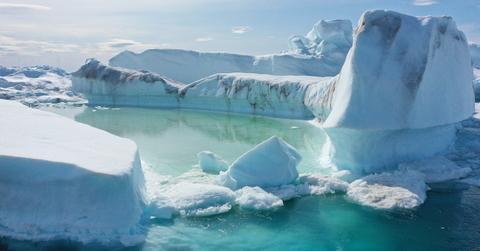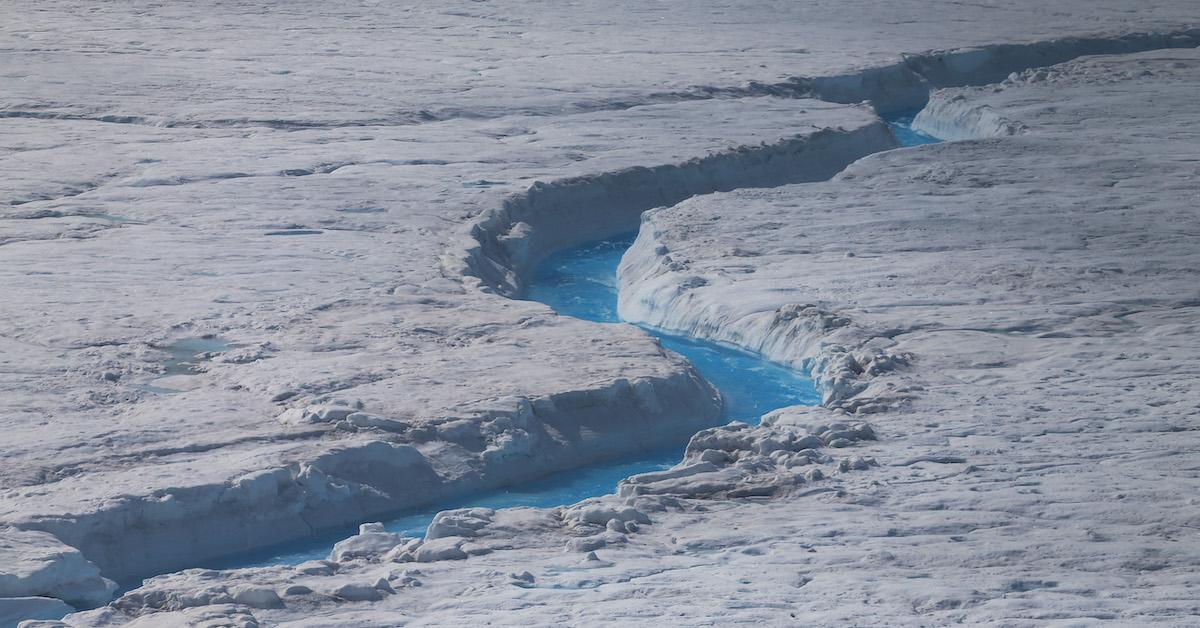It Just Rained at Greenland’s Highest Summit for the First Time — And You Can Guess Why
Published Aug. 23 2021, 4:54 p.m. ET

While you may not enjoy a snowy day, the nation of Greenland certainly does. In fact, it needs snowy days. So when it recently rained on Greenland’s summit region instead of snowing, scientists became very worried — because it was actually the first time that the highest point of Greenland’s ice sheet experienced rain in recorded history.
Yes, this has to do with the climate crisis — as human activity continues to warm the globe, ice sheets are melting and what should be snow is falling down as rain. But why exactly did Greenland experience this record-breaking rainfall?

It recently rained on Greenland’s highest summit for the first time.
In mid-August 2021, scientists at the National Science Foundation’s Summit Station, located at the Greenland Ice Sheet’s highest point, suddenly observed the summit region surrounded by rainfall, as reported by the National Snow and Ice Data Center. The rain, which fell for a few hours, was the first documented rain in the area in history.
The location, which hits about 10,551 feet (about 2 miles) in elevation, not only experienced rain, but the air hit above-freezing temperatures for about nine hours — that is only the third time in the past decade that the station measured above-freezing temperatures.
Why did it rain on the Greenland ice sheet? Global warming is a huge factor.
So while it’s pretty obvious that global heating is a major factor here, what specifically caused the temperature to get so high at this location that rain actually fell instead of snow for the first time?
According to the National Snow and Ice Data Center, the “melting event” that occurred from August 14 to 16, 2021 was caused by a high air pressure southeast of Greenland, combined with a strong low pressure center over Baffin Island, located to the west of Greenland. The two forces blew hot, moist air up towards Greenland, which raised temperatures and caused the snow to turn to rain.
The data center added that on Aug. 14 and 15, there was significant rainfall and surface melting around Greenland’s southeast coast, which soon spread up to the summit region.
Greenland’s rainfall and above-freezing temperatures are clear evidence of the climate crisis.
"What is going on is not simply a warm decade or two in a wandering climate pattern," scientist Ted Scambos of the National Snow and Ice Data Center told CNN. "This is unprecedented," he added, stating this month’s events stand as scientific evidence of global warming in Greenland.
Thomas Mote, a University of Georgia climate scientist, agreed. As he told The New York Times, the increasing frequency of warming and melting in the Arctic are “real evidence of climate change in Greenland.”
The rising temperatures, melting ice, rising sea levels, and rainfall are more than just a sign of global warming in Greenland. In the UN’s IPCC’s recent climate report, scientists observed evidence of climate change in every single region on Earth. To prevent these changes from becoming irreversible, we need major governments to make radical commitments to slashing greenhouse gas emissions.
Greenland has already banned oil drilling throughout the country and its waters — hopefully other, larger countries will step up soon and do the same.